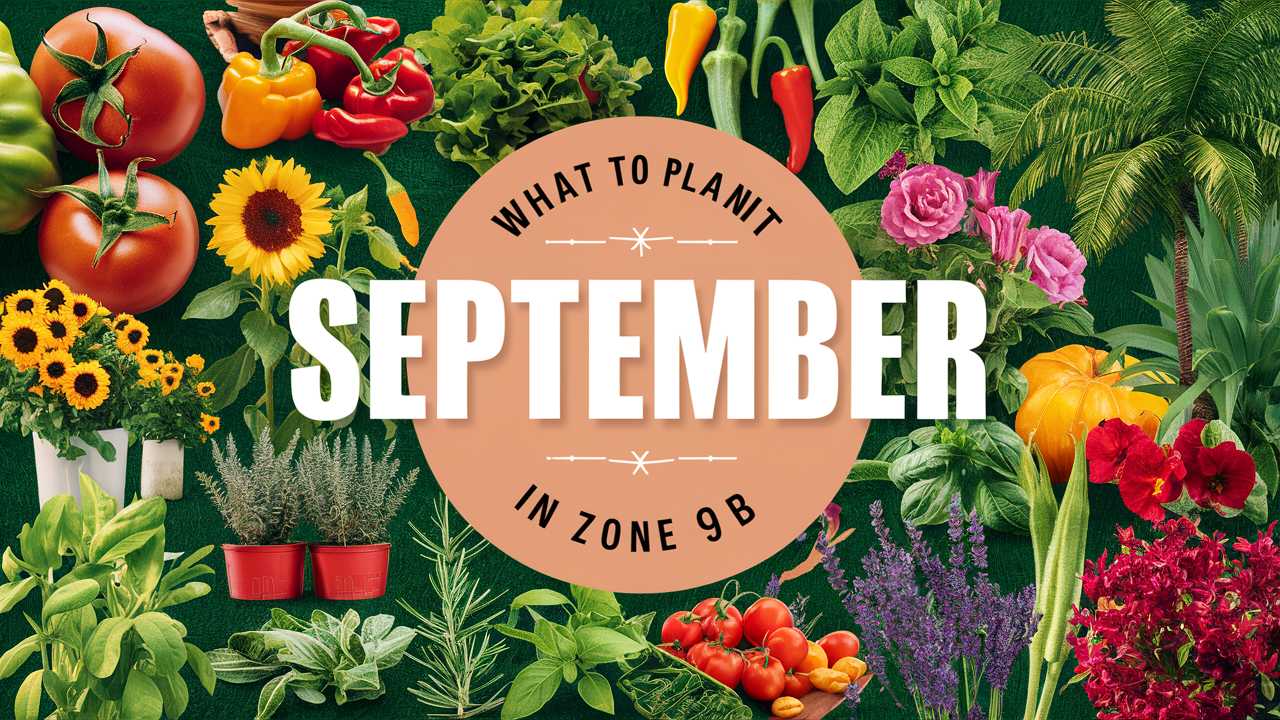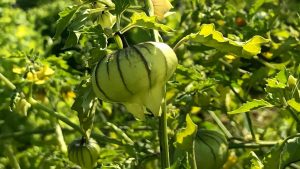September in USDA Zone 9b marks a significant shift in gardening opportunities. As the sweltering summer heat begins to wane, it’s the perfect time to embrace the cool-season crops, ornamental flowers, aromatic herbs, and vibrant landscape plants.
This guide will help you identify the best plants to introduce to your garden in September, with detailed insights about their growing conditions, temperature tolerances, and planting specifics.
Vegetables To Plant
Spinach

Spinach is a cool-season leafy green that thrives in the mild temperatures of fall. In Zone 9b, you can sow seeds from mid-September until late October. Spinach prefers temperatures between 40°F and 75°F, making it an excellent candidate for this time of year. The plant’s quick maturation—typically within 30 to 45 days—allows you to enjoy fresh harvests right through late fall.
To cultivate spinach successfully, plant seeds ½ inch deep in well-draining soil enriched with compost. Ensure the location receives partial to full sun for optimal growth. Spinach can handle light frosts, which actually improve its flavor, so don’t worry about colder nights towards autumn.
Broccoli

As a brassica, broccoli thrives in cooler weather and can be planted from mid-September to early October in Zone 9b. Optimal growth occurs in temperatures between 65°F and 75°F. Planting seedlings or seeds can yield harvest-ready heads in roughly 85 to 100 days.
Broccoli requires well-drained, fertile soil rich in organic matter. Space plants 18 inches apart and make sure they receive at least six hours of sunlight daily. With proper care, including consistent watering and mulching to maintain moisture, you can expect robust harvests that last until winter.
Carrots

Carrots can be sown directly into the ground in September in Zone 9b, usually from mid-September through October. They prefer cool temperatures, ideally around 60°F-70°F, which helps with their sweet flavor development. Harvest will typically occur in 70 to 80 days after sowing.
Sow seeds ¼ to ½ inch deep in well-prepared, loose soil with good drainage. Thin the seedlings to 2-3 inches apart for optimal growth. Carrots do exceptionally well in sandy soils, so if your garden has clay, consider amending it to promote root development.
Kale
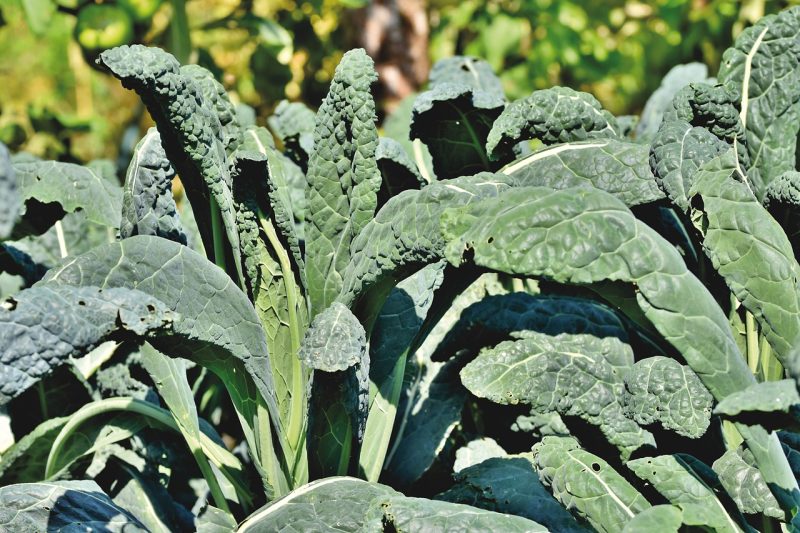
Kale is another hardy green that can be planted in early September in Zone 9b. This vegetable can endure temperatures as low as 20°F, making it perfect for a fall harvest. With a growth window of about 55 to 75 days, you can expect to enjoy this nutritious leafy green even into the cooler months.
Plant kale seeds or transplants in rich, loamy soil, ensuring they are spaced roughly 12 inches apart. Kale benefits from nutrient-rich soil and consistent watering. Additionally, it can tolerate some shade, making it a versatile option as the days become shorter.
Beets
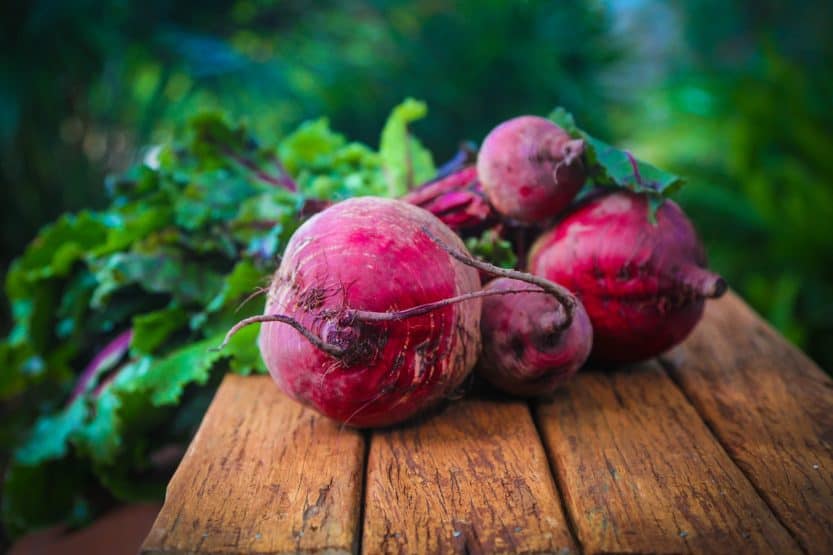
September is prime time to plant beets in Zone 9b. You can sow seeds directly from mid-September to early October. This root vegetable flourishes in cool weather and appreciates temperatures around 50°F-65°F. Beets take about 50 to 70 days to mature.
When planting, ensure seeds are 1-2 inches apart and sow them about ½ inch deep in well-draining soil. Be sure to keep the soil moist, and consider adding a layer of mulch to retain moisture and encourage even germination.
Swiss Chard

Known for its vibrant colors and nutritional benefits, Swiss chard does well when planted in September in Zone 9b. It can tolerate temperatures down to about 20°F, making it resilient against the cooler evenings of fall. Chard typically matures within 50 to 60 days.
To grow Swiss chard, sow seeds 1 inch apart and about ½ inch deep in amended soil to ensure drainage and nutrient availability. Chard grows best in full sun, but it can also thrive in partial shade, giving you flexibility in garden placement.
Turnips
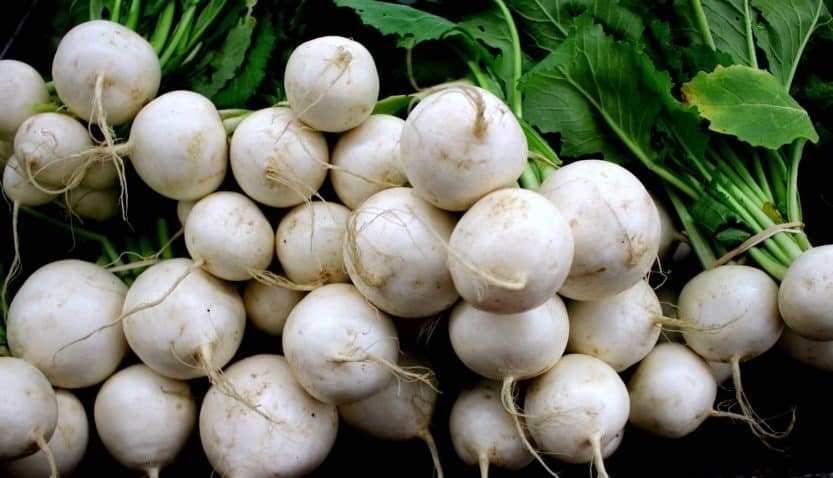
Turnips are another great addition to your Zone 9b garden. If planted in mid-September, they will mature in about 60 days, thriving best in cooler temperatures. Turnips can manage temperatures as low as 25°F, providing you a robust crop through the autumn.
Prepare the soil by loosening it well, as turnips grow deep roots. Sow seeds ½ inch deep and 2 inches apart in rows. Thin the seedlings to provide each plant ample space for growth. Turnips can also be harvested at different stages, adding flexibility to your harvest.
Garlic
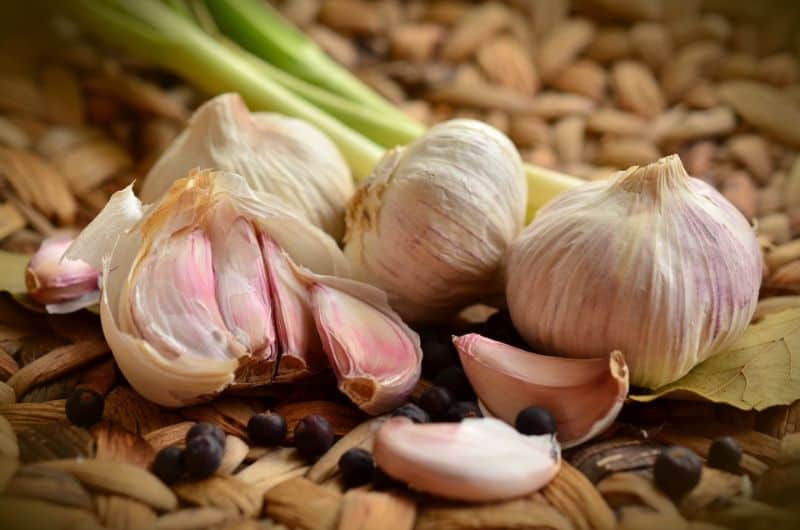
Although technically not a fall crop, garlic cloves can be planted in late September in Zone 9b for a harvest in the following summer. This allium thrives in cooler soil and needs a period of chilling to develop properly. Plant cloves when nighttime temperatures drop consistently to 50°F.
Space cloves about 6 inches apart and 2 inches deep in well-draining soil. Add mulch to protect the soil and maintain moisture levels. Come summer, expect to harvest bulbs in late June to early July, depending on the variety planted.
Peas
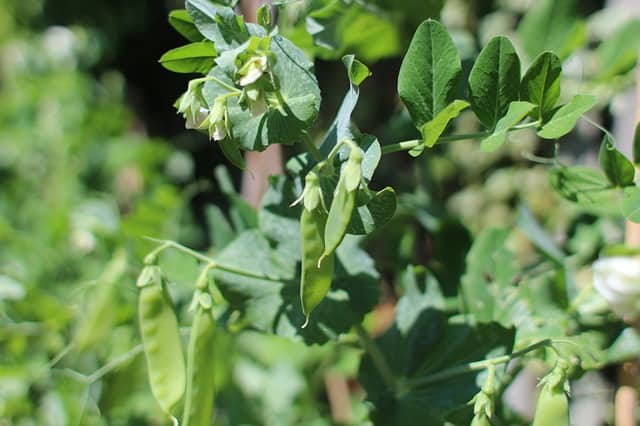
Sugar snap or snow peas can be planted in September in Zone 9b as well. They flourish in cooler temperatures, ideally between 45°F and 70°F. You can expect a generous harvest about 60 days after planting.
Plant seeds 1-2 inches apart and 1 inch deep, ideally against a trellis or support structure that allows them to climb. Peas appreciate well-draining soil and regular watering. They’re a great choice for early fall planting and can thrive into the winter months with protection.
Radishes

Radishes are quick-growing vegetables that can be sown in September in Zone 9b. They thrive in temperatures ranging from 50°F to 70°F and will typically mature in about 30 days. Their quick growth cycle allows for potentially multiple harvests throughout the fall.
Sow radish seeds directly in the garden at a depth of about ½ inch and space them a few inches apart. They prefer well-drained soil and can tolerate some shade, making them an excellent choice for planting in more compact spaces.
Flowers To Plant
Pansies

Pansies are beloved for their vibrant colors and resilience. In Zone 9b, they can be planted in September for blooms that will last through the cooler months. Pansies thrive in temperatures of 40°F to 60°F, making them perfect for fall planting.
To plant pansies, choose a well-draining garden bed and place them 8-12 inches apart. These flowers prefer full sun to partial shade and will benefit from regular watering and deadheading to promote continual blooming.
Snapdragons
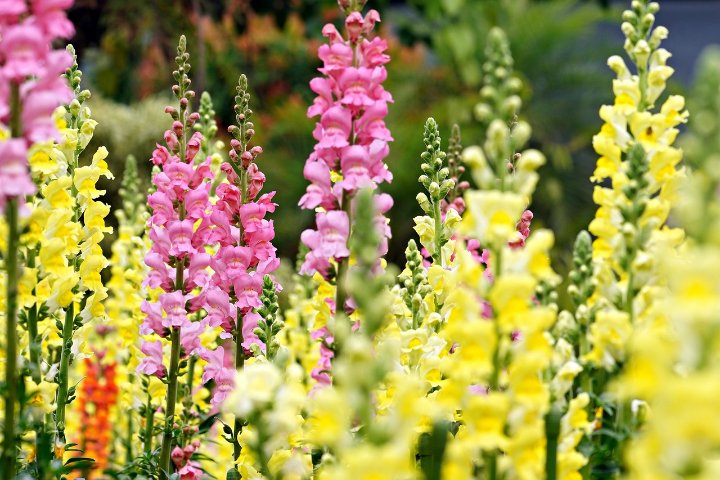
Snapdragons can also be planted in the fall in Zone 9b, blooming beautifully from winter into early spring. They enjoy cooler temperatures, ideally between 45°F and 75°F, and can add height and color to your garden.
Sow seeds directly or transplant seedlings in well-draining, nutrient-rich soil. Space them 10-12 inches apart for optimal airflow. Snapdragons appreciate full sun and will flourish with consistent watering, especially during dry spells.
Caladiums
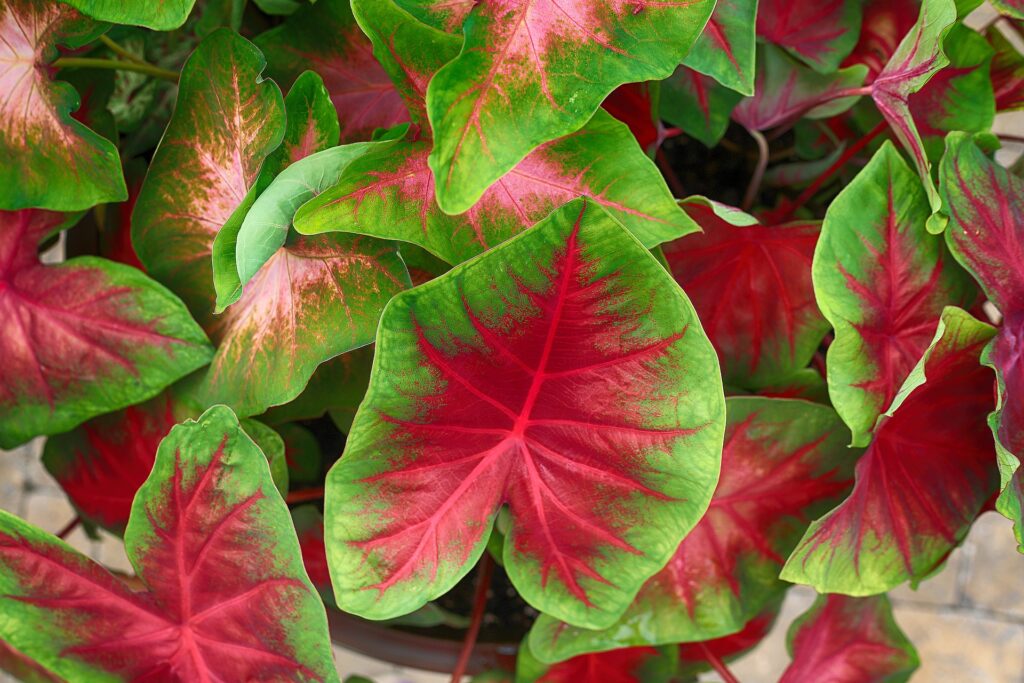
Caladiums offer a striking foliage display that can be planted in September in Zone 9b if you aim for their seasonal bloom during the following months. These tropical plants thrive in warmth but still appreciate the cooler nights of fall collecting moisture.
Plant caladium tubers in well-draining soil about 1-2 inches deep. Ensure they receive partial to full shade for optimal growth. Caladiums are also sensitive to frost, so plant them after the last frost to prevent damage.
Cosmos
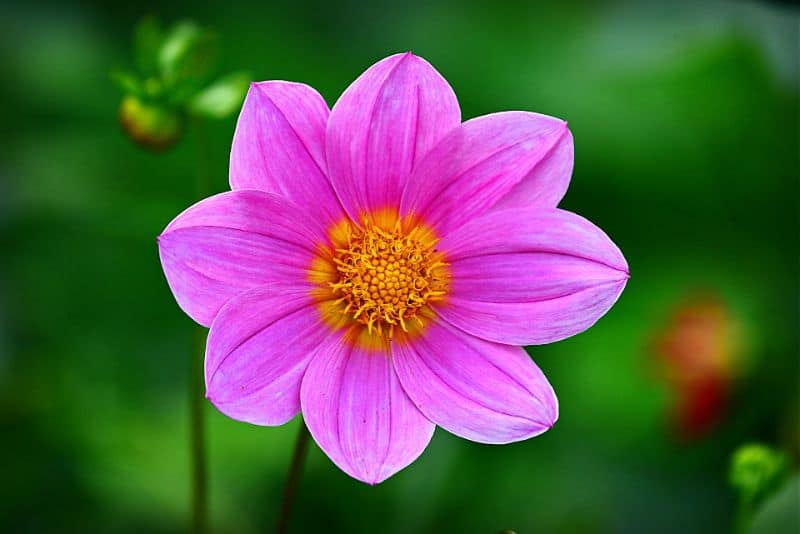
Cosmos are hardy, low-maintenance flowers that can be sown in September in Zone 9b for gorgeous early winter blooms. They flourish in temperatures from 60°F to 80°F, making fall an ideal time for planting these beauties.
Plant cosmos seeds 1-2 inches apart and ¼ inch deep in fertile, well-drained soil. They prefer full sun and will thrive with minimal watering once established. Cosmos are drought-tolerant and attract beneficial pollinators, making them a favorite for gardeners.
Ornamental Kale
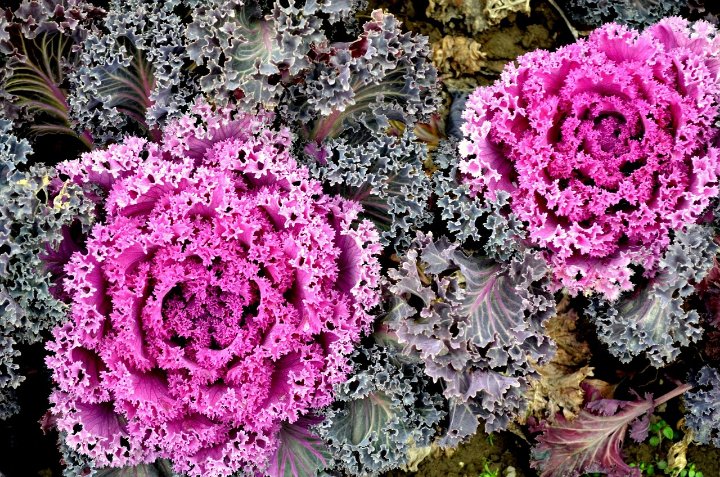
Plant ornamental kale in September for stunning foliage that brightens up gardens throughout the cooler months. This hardy plant thrives in temperatures between 40°F and 70°F and offers vibrancy well into the winter season.
Space ornamental kale about 12-18 inches apart in nutrient-rich, well-draining soil. These plants are quite versatile, as they thrive in full sun or partial shade. Ensure consistent watering for optimal health, especially during dry weather conditions.
Delphiniums
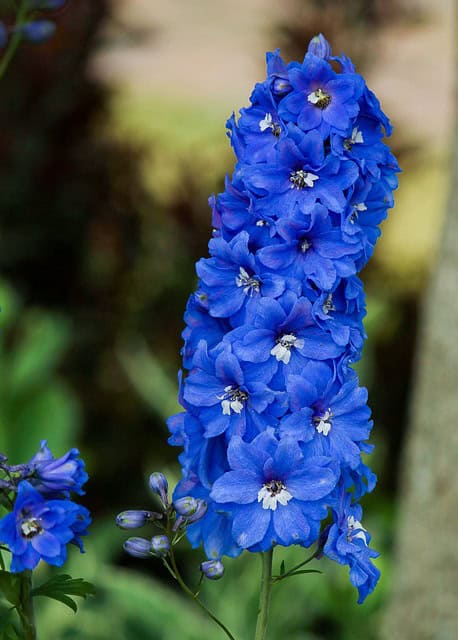
Delphiniums, with their towering spikes of blue flowers, are stunning additions to any garden. Plant them in September in Zone 9b to get a head start on spring blooms. They grow best in 60°F to 70°F temperatures.
Sow delphinium seeds directly in a sunny area of your garden with well-drained soil. Space seedlings 12-18 inches apart to allow for their height. Delphiniums require consistent watering but should not be overly saturated to avoid root rot.
Violas
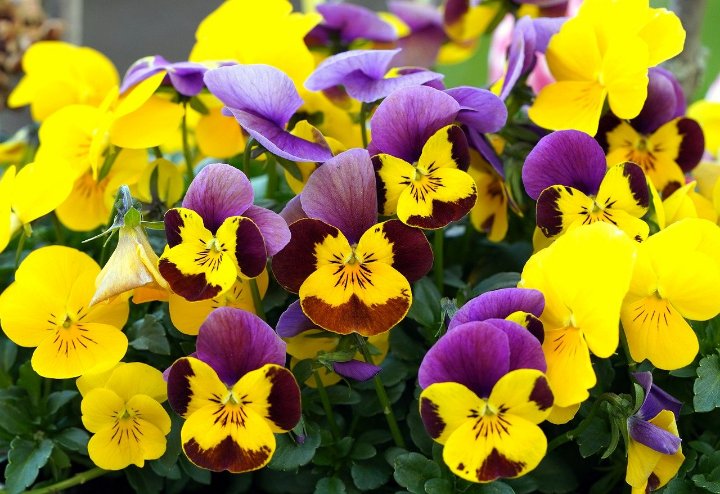
Violas, similar to pansies but often smaller, can be easily planted in September. These hardy plants can tolerate temperatures down to 20°F and are excellent for fall gardens in Zone 9b.
Sow viola seeds in well-draining soil about 1/4 inch deep. They thrive in both full sun and partial shade, making them versatile garden companions. Violas benefit from regular deadheading and watering, and like pansies, they provide continuous blooms throughout the cooler months.
Marigolds

Marigolds are tough flowers that can continue to bloom well into the fall when sown in September. Their preferred temperatures fall between 70°F and 85°F, making them suitable for the transition from summer to autumn.
Plant marigold seeds about an inch apart and ¼ inch deep into well-drained, fertile soil. They thrive in full sun and require regular watering, particularly during dry spells. Their lively colors also attract pollinators and may deter pests from surrounding plants.
Dusty Miller
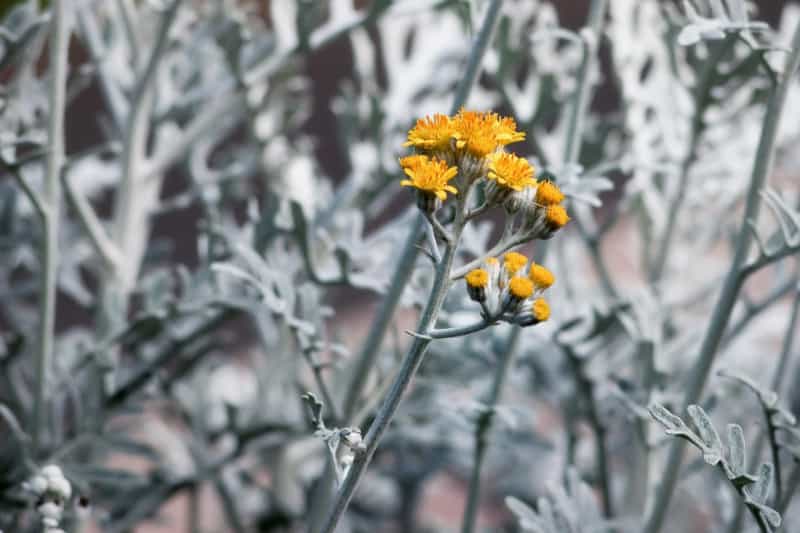
Dusty Miller is an ornamental perennial valued for its striking silvery foliage. Planting in September allows it to become established before the chill of winter arrives. Ideal growing temperatures are between 50°F and 70°F.
They do well in well-drained soil with full sun to partial shade. Space plants about 12-15 inches apart for optimal growth. Dusty Miller thrives with moderate watering and is known for being drought-tolerant once established.
Asters
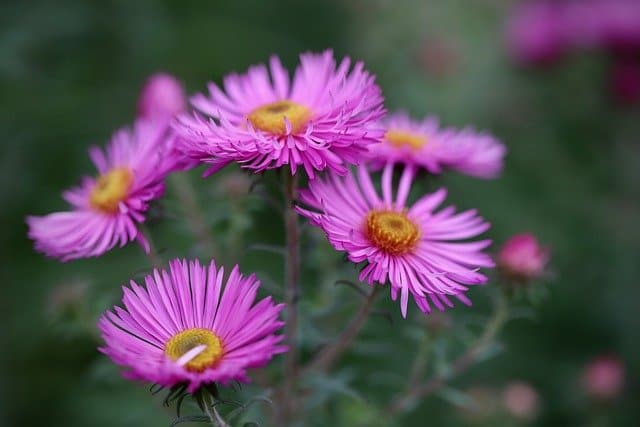
Asters bring a much-needed punch of color to fall gardens and can be planted in mid-September. They thrive in temperatures from 60°F to 70°F and can bloom until the first frost.
For planting, select a well-drained, sunny spot and sow seeds about 1/4 inch deep. Space seedlings 12 inches apart. Regular watering helps encourage growth, and a layer of mulch can help maintain soil moisture.
Herbs To Plant
Cilantro

Cilantro is a versatile herb ideal for planting in September in Zone 9b. It grows best at temperatures between 55°F and 75°F, making the fall season perfect for planting. The herb matures in approximately 50 to 70 days.
Sow seeds directly in rich, well-drained soil about ¼ inch deep. Cilantro prefers partial shade to full sun. Regular watering is important to maintain adequate moisture, especially in dry spells.
Chives
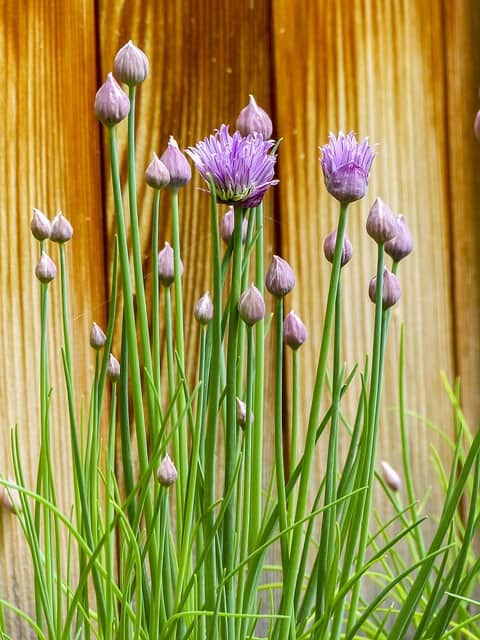
Chives are a hardy herb of the allium family that can be sown in September. They thrive in cooler temperatures, ideally between 50°F and 70°F, and can be harvested within about 70 days.
Sow seeds directly about ¼ inch deep in well-draining soil, ideally in a sunny location. Once established, chives require minimal care, being drought-resistant. Cut them back after flowering to encourage new growth.
Thyme
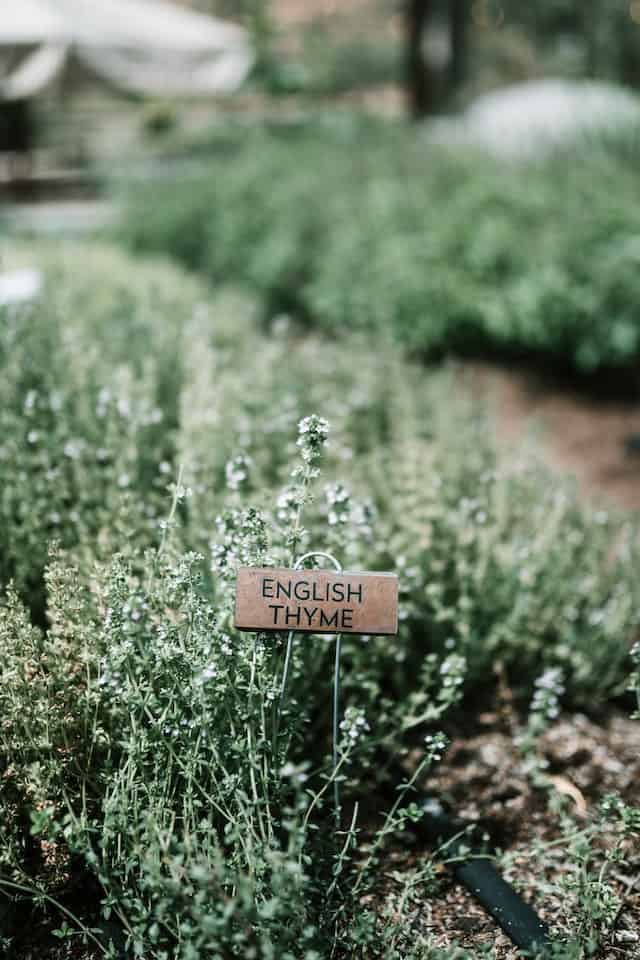
thyme is an aromatic herb that can be planted in late September. This perennial thrives in temperatures around 60°F to 70°F and can be harvested in 90-120 days after sowing.
Thyme prefers full sun and well-draining soil. Plant seeds about ¼ inch deep and 6-12 inches apart. With minimal watering and care, thyme can thrive for many years in your garden.
Oregano

Oregano is another warm-loving herb that can be planted into fall in Zone 9b. The ideal temperature for planting is between 60°F and 75°F. You can harvest leaves anywhere from 70 to 100 days after planting.
Oregano enjoys well-draining soil and should be sown about ¼ to ½ inch deep. Space plants 12-24 inches apart to allow for their spreading habit. This herb is drought-tolerant once established and is best grown in full sun.
Mint
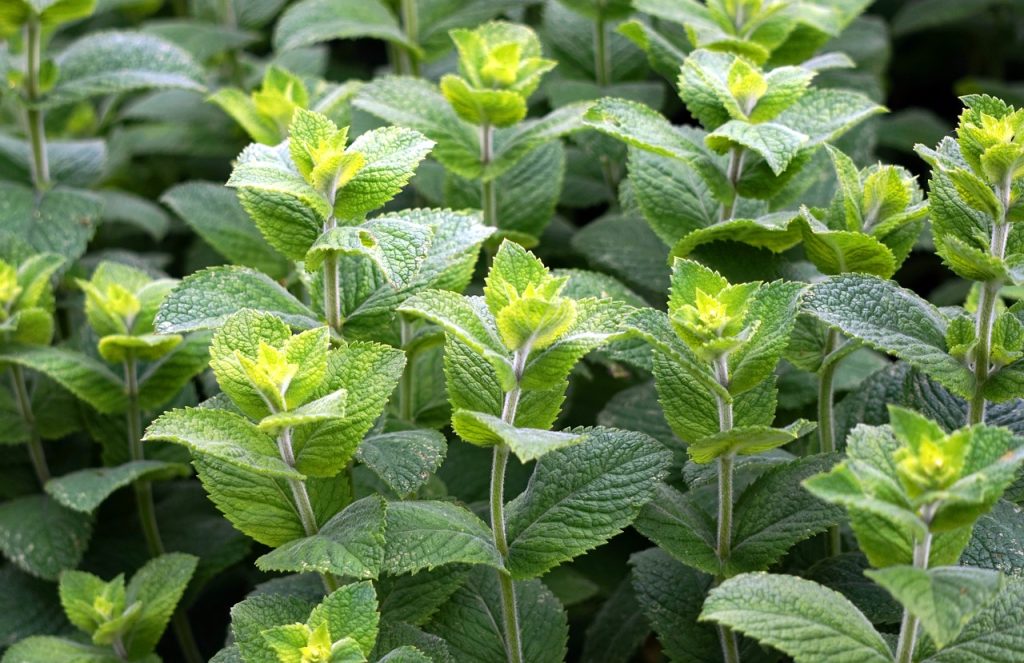
Mint can be planted in late September in Zone 9b, benefiting from the cooler temperatures. It grows best in temperatures around 60°F to 75°F and can be harvested in about 60 days.
Sow seeds or plant cuttings in rich, moist soil with good drainage. Mint can be invasive, so it’s advisable to provide boundaries, such as planting in containers. It prefers full sun to partial shade and requires consistent moisture.
Sage

Sage is a hardy perennial herb that can be planted in late September. It thrives in temperatures between 60°F and 75°F. It typically matures in about 75-80 days, providing you with aromatic leaves shortly thereafter.
Plant sage in well-draining soil, ¼ inch deep, with 12-24 inches of space between plants for optimal growth. It prefers sunny locations and is drought-resistant once established.
Basil
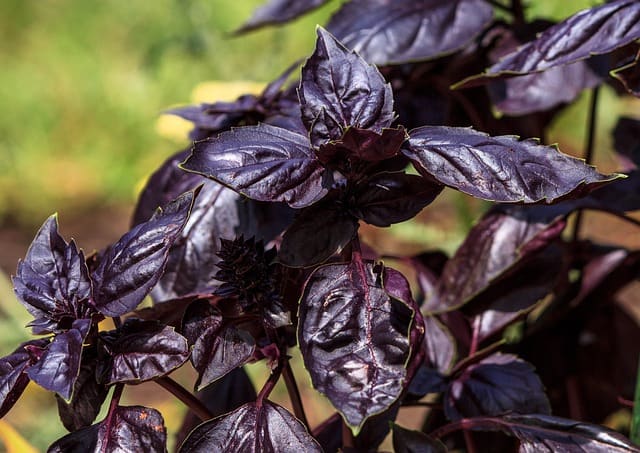
Basil’s warm nature means it may be on its way out as temperatures dip. However, in the early part of September, there is still an opportunity to plant it. Ideal temperatures range from 70°F to 85°F, whether you choose to grow it in seed or as a transplant.
Basil thrives in well-draining soil with full sun exposure. Space seeds 12 inches apart to allow for robust growth. Basil requires regular watering, ideally in the morning, to maximize leaf retention before sunlight will cause them to wilt.
Tarragon
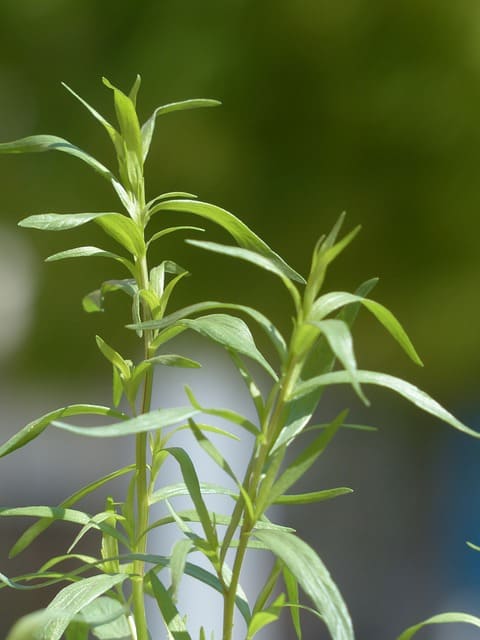
Tarragon is a perennial herb that can be planted in September in Zone 9b. It prefers semi-arid climates and can handle 60°F to 70°F temperatures. You can expect to harvest tarragon leaves in about 90 days.
Space seeds or transplants 18-24 inches apart in ensuring they receive full sun and adequate spacing for airflow. Tarragon does well in well-drained, fertile soil, requiring consistent moisture during growth.
Dill
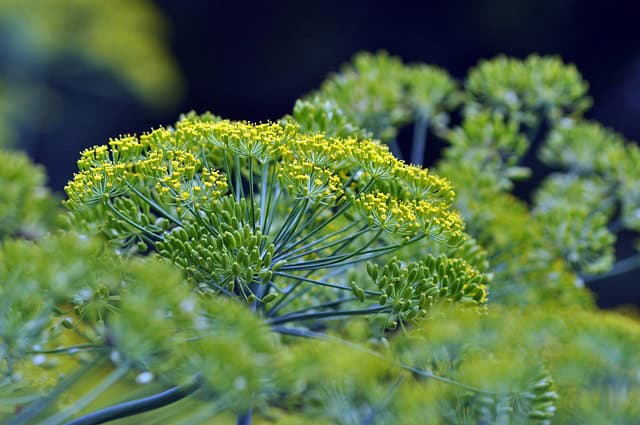
Dill is an aromatic herb that can thrive in cooler temperatures, making it suitable for fall planting. Sow seeds in September in Zone 9b, where temperatures range from 55°F to 75°F, and expect to harvest in about 70-80 days.
Sow dill seeds directly in well-drained soil at ¼ inch deep and 18 inches apart. Dill appreciates full sun and requires regular watering to flourish.
Parsley

Lastly, parsley can be sown in September for an extended harvest into winter. It grows best in temperatures between 60°F and 75°F, maturing in about 70 to 90 days.
Sow seeds ¼ inch deep in well-draining soil, spacing plants 8-10 inches apart. Parsley prefers full sun but can tolerate partial shade. Regular moisture will help keep the leaves lush.
Landscape Plants To Plant
Texas Sage (Leucophyllum frutescens)

Texas Sage is an excellent choice for drought-tolerant landscaping in Zone 9b. Planting in September allows it to establish roots before the cooler winter months. This hardy shrub thrives well in temperatures up to 100°F and can tolerate light frost.
Texas Sage prefers well-drained, sandy soils and benefits from full sun. Once established, it requires minimal watering, making it an excellent choice for low-maintenance gardens.
Oleander (Nerium oleander)

Oleander is a vibrant flowering shrub that continues blooming through the fall in Zone 9b. It thrives in warm temperatures, withstanding highs over 100°F and can tolerate mild frosts. Planting in September allows time for root establishment.
Choose a well-draining location and ensure plants are spaced about 5-10 feet apart. Oleander is drought-tolerant and requires minimal care—perfect for low-maintenance landscaping.
Abelia (Abelia x grandiflora)
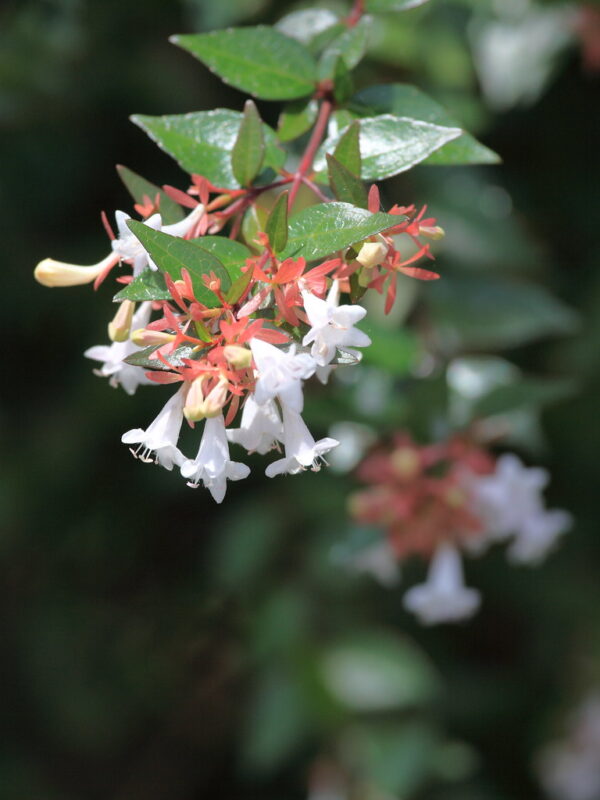
Abelia is a flowering shrub that does well in Zone 9b gardens. Plant in September to take advantage of the cooler temperatures, allowing the roots to settle in for a successful spring bloom. It can tolerate temperatures from 20°F to 100°F.
These shrubs prefer well-drained soil and do well in full sun to partial shade. Regular pruning after blooms will promote new growth and keep the shape attractive.
Bottlebrush (Callistemon)
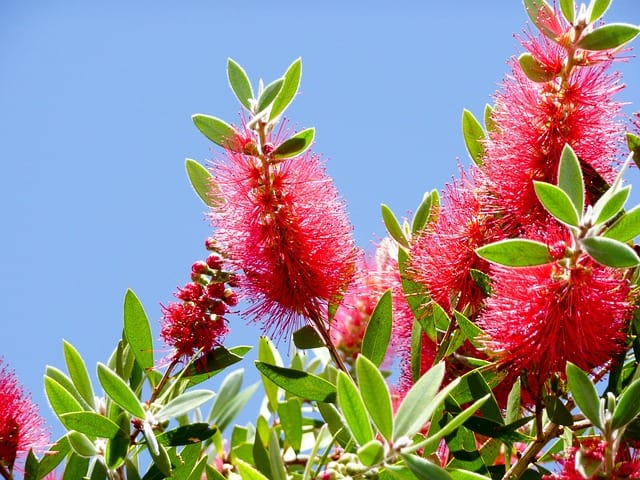
Bottlebrush plants are known for their unique, tube-shaped flowers that attract birds and butterflies. Planting in September is optimal for establishing this shrub ahead of winter. It tolerates a range of temperatures, thriving between 60°F and 90°F.
These shrubs prefer sandy, well-drained soils and full sun exposure. Once established, Bottlebrush plants require minimal watering, making them a low-maintenance option in your landscape.
Holly (Ilex)
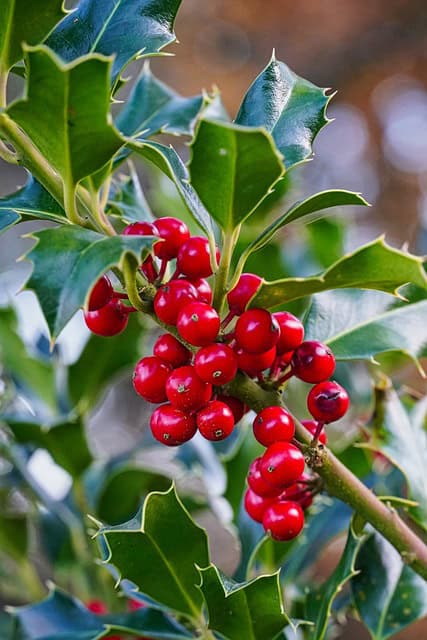
Holly is an excellent evergreen choice for landscaping that offers year-round interest. Planting in September in Zone 9b allows them to establish roots before cooler weather. Hollies thrive in a range of temperatures, from 10°F to 80°F.
Plant in well-drained, acidic soil, spacing them 8-10 feet apart for larger varieties. They appreciate partial to full sun and require regular watering, especially during dry periods.
Camellia (Camellia japonica)
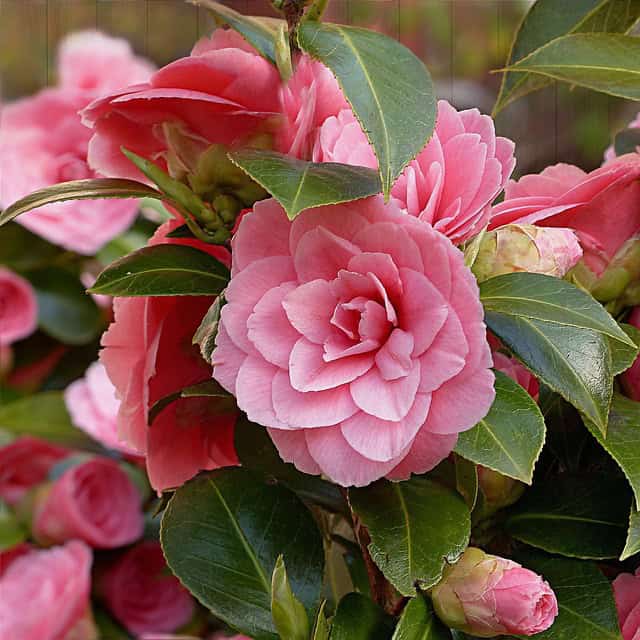
Camellias are a beautiful choice for fall and winter landscaping. They can be planted in September and prefer temperatures ranging from 60°F to 80°F. Camellias take about three years to mature but will reward you with stunning blooms in the cooler months.
Choose a spot with well-drained, acidic soil and partial shade. Regular watering during dry periods will encourage growth, particularly during establishment.
Agapanthus (African Lily)
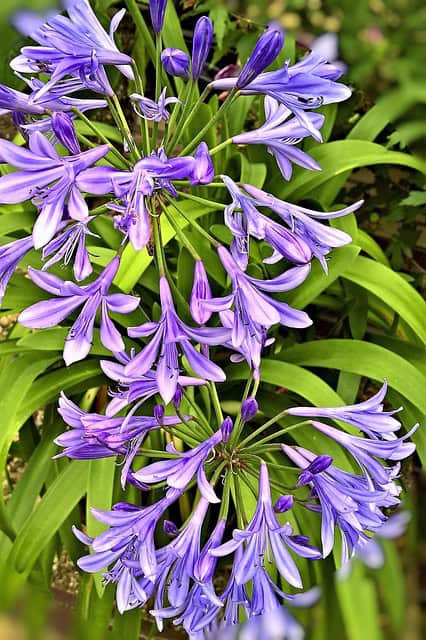
Agapanthus, or African Lily, is a perennial that thrives in Zone 9b. Planting in September allows the foliage to establish before winter. These plants flourish in temperatures from 40°F to 90°F.
Agapanthus prefers well-draining soil and does well in full sun to partial shade. Once planted, they require minimal care and can tolerate drought once established, making them an excellent choice for low-maintenance gardens.
Daylilies (Hemerocallis)
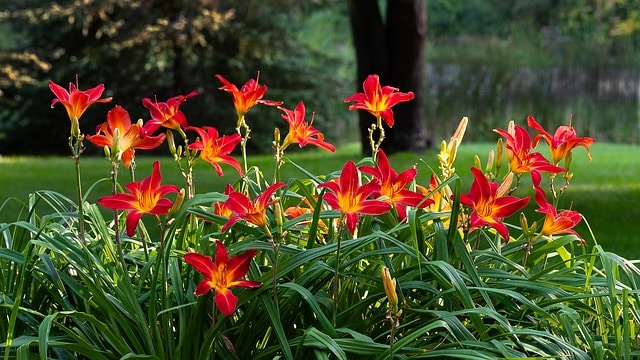
Daylilies are perennial flowering plants that can be planted in Zone 9b in September. They thrive in temperatures between 50°F and 85°F and can bloom shortly after being established, often within the following spring.
Make sure to plant them in well-drained soil with full sun exposure. Daylilies are drought-tolerant and low-maintenance once established.
Lavender (Lavandula)
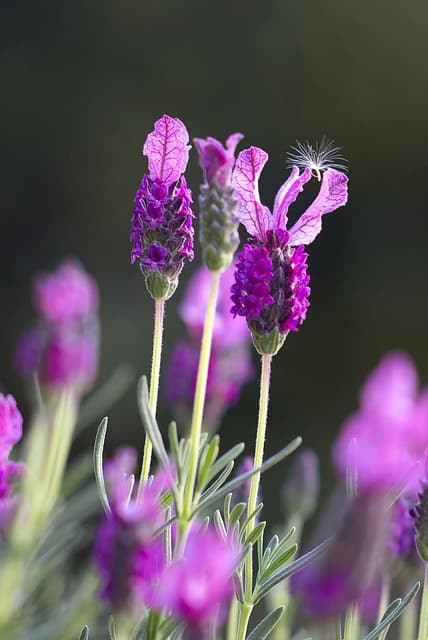
Lavender is a fragrant and beautiful addition to any garden in Zone 9b. Planting in September allows these drought-tolerant perennials to establish as the cool months approach. They flourish in warm, sunny conditions, typically 70°F to 85°F.
Space plants about 12-18 inches apart, ensuring well-draining, sandy soil with a slightly alkaline pH. Once established, lavender requires minimal watering and can thrive with poor soil.
Lantana
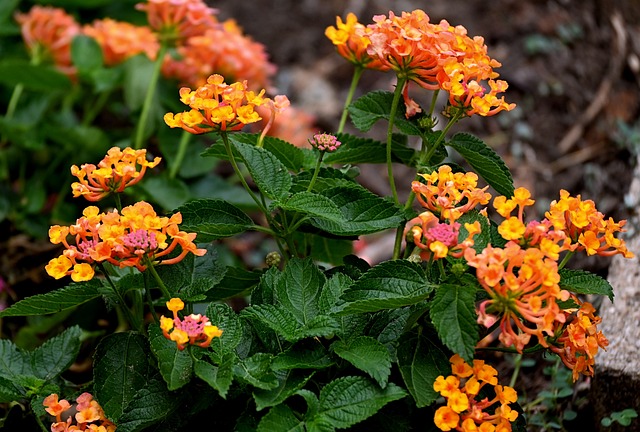
Lantana is a hardy perennial that produces colorful blooms perfect for attracting butterflies. Planting in September keeps these plants thriving through the fall as they establish their roots. They prefer warmer temperatures, thriving between 60°F and 90°F.
Choose sunny, well-drained locations with low humidity for planting. Space plants about 2 feet apart, and once established, Lantanas are drought-resistant and relatively low maintenance.


